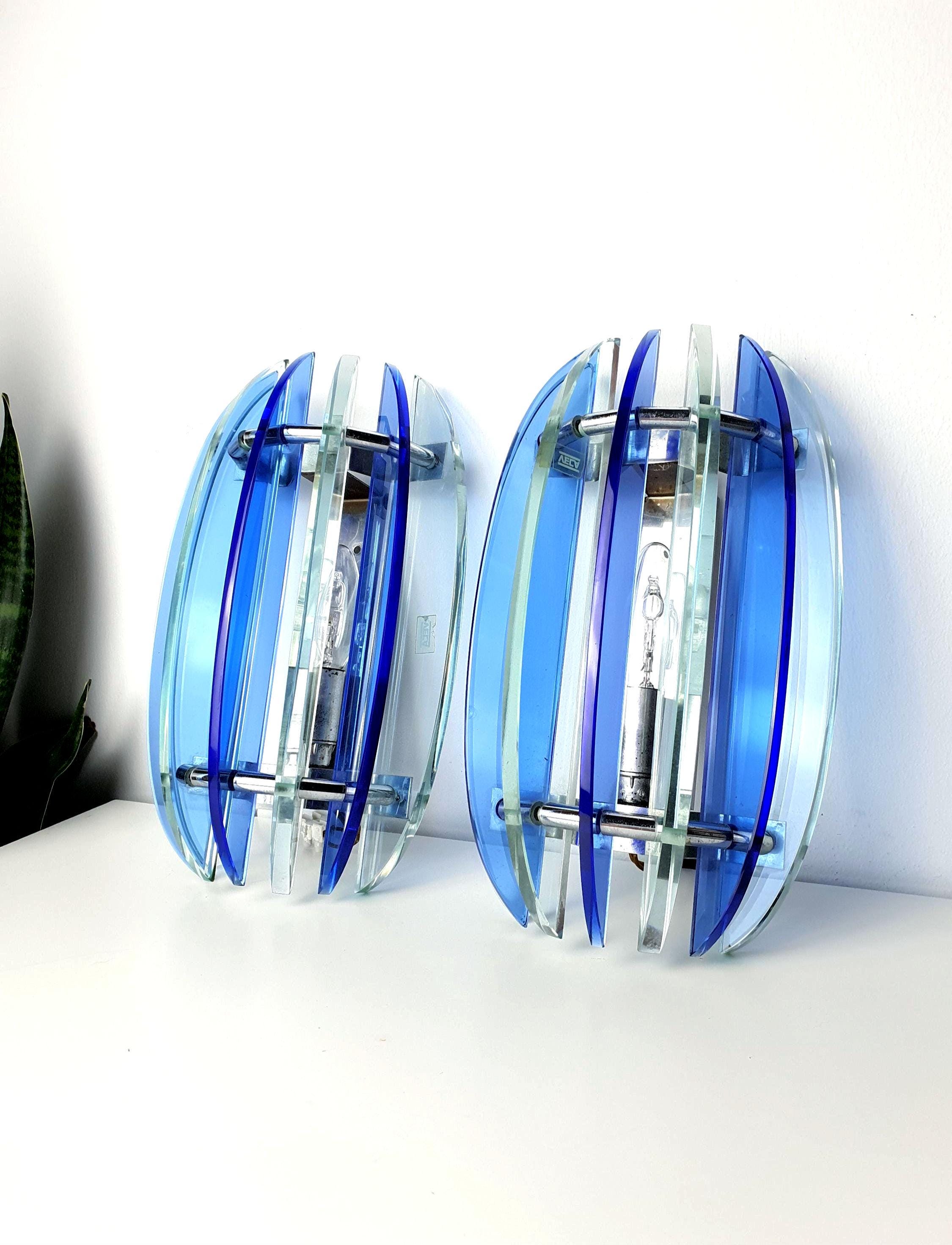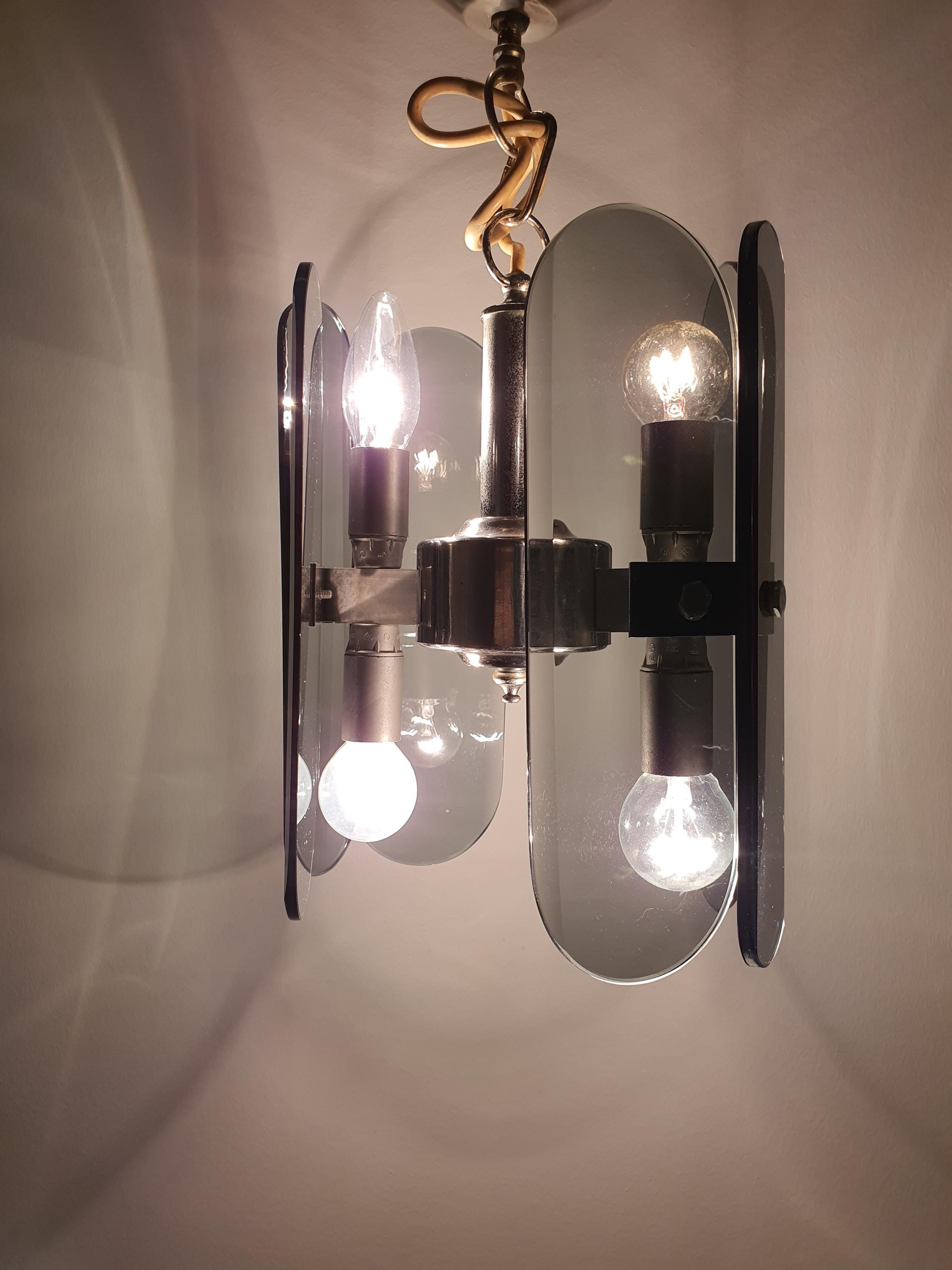The Glow Behind the Name
In the world of mid-century Italian design, few names shimmer between fame and anonymity quite like Veca. While Fontana Arte dazzled the magazines, Veca’s artisans quietly fired the furnaces that made those luminous dreams tangible. Their partnership throughout the 1960s-70s defined a decade of modern lighting — glass so alive with color it seemed to breathe.
Today, as collectors and designers rediscover these pieces, Veca’s double-fused glass and chromed geometry have become shorthand for authentic Italian elegance.
The Craft: Double Fusion and Venetian Precision
Veca’s signature process fused two layers of molten glass — a tinted outer shell and clear crystal core — then hand-cut the edges to reveal a glowing inner band. The result was a liquid-gem finish impossible to replicate by mass production.
The technique found its stage in Fontana Arte’s bold sketches: smoked-glass wall sconces, cobalt pendants, mirror-rimmed lamps. Every bevel caught the light differently, turning domestic interiors into small theatres of reflection.
Fontana Arte and the 1970s Renaissance of Glass
By the early 1970s, Italian design was pivoting from organic curves to sharper, architectural lines. Fontana Arte, under designers like Gae Aulenti, embraced glass and chrome as symbols of modern luxury.
Veca executed these visions flawlessly — crafting modular chandeliers, back-lit mirrors, and prismatic sconces. Many Fontana Arte pieces of the period bear Veca’s unmistakable cut: thick glass plates, beveled at impossible angles, suspended in polished metal cages.
Collectors today often use the phrase “attributed to Veca for Fontana Arte” to identify this signature craftsmanship.
From Glow to Legend: Why Veca Matters Now
Veca’s story ended quietly around 1980 as energy crises and mass-manufacturing shifted Italy’s design economy. But the glass endures — turning up in Milan, Copenhagen, Tokyo, Los Angeles — glowing like preserved fragments of 1970s optimism.
Owning a Veca isn’t just acquiring décor; it’s holding a moment when Italian artisanship met futurist imagination. Each chandelier, wall lamp, or mirror carries the hand of the anonymous craftsman who cut it — proof that beauty often outlasts its name.
How to Identify Authentic Veca Pieces
-
Glass: Heavy, double-layered, often smoked, blue, or amber; beveled edges with visible depth.
-
Metal: Chrome or nickel-plated brass with minimal join lines.
-
Style: Geometric, futuristic silhouettes, frequently circular or hexagonal.
-
Condition: Original wiring (1970s), slight patina — signs of authenticity, not flaws.
Collect and Care: Veca at Vigems
At vigems.com we specialize in sourcing authentic vintage Veca lighting and mirrors, carefully verified and preserved. Each piece is photographed in natural light, inspected for glass integrity, and packed using museum-grade materials.
We ship worldwide with insurance and professional packaging, so your piece of Italian design history arrives safely, ready to illuminate a new space.










